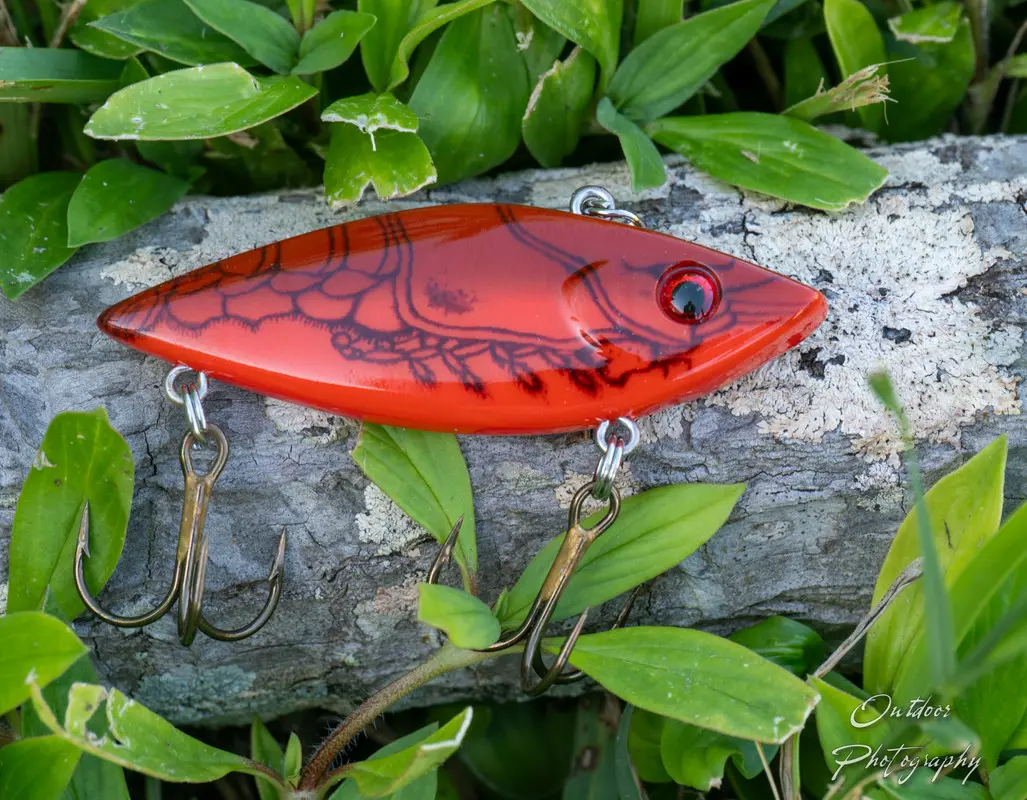Tackle: Lure - Crankbaits (Lipless)

Lipless Crankbait Fishing: Gear, Techniques & Scenarios 📌
Lipless crankbaits—also known as vibrating or rattling lures—are among the most versatile hard‑baits for bass. With no lip and internal rattles, they produce intense vibration and sound underwater, triggering reaction strikes even in cold or stained water. They’re ideal for “covering water” quickly: rip them, yo‑yo them, reel‑pause‑reel, whatever yields bites when traditional lures don’t.
🎣 Gear: Rod, Reel & Line
Rod Length & Action
- Length: Aim for 6′10" to 7′2″
- Power/action: Medium‑heavy (MH) with a moderate‑fast or fast tip
- This blend gives backbone to rip the lure out of cover, yet enough flex to absorb headshakes and keep trebles in the fish’s mouth.
Reel Speed
- A high-speed reel—6.4:1 to 7:1 gear ratio—is preferred. This enables fast retrieves and helps rip lures clear of weeds, as well as slow rolling when needed.
Line Type & Test
- Fluorocarbon in the 12–15 lb range is ideal for ¼–½ oz lipless crankbaits in open or moderately clear water.
- For ½–¾ oz baits and heavier cover, bump to 17-20lb.
Depth & Retrieve Techniques
Dive Depth
- Lipless crankbaits typically don’t dive more than 3 to 5 feet. They tend so sink quickly though, so fishing them deeper just mean waiting until the bait sinks to the desired depth and then beginning your retrieve.
Retrieve Styles
- Straight retrieve (“chunk & wind”): constant speed is effective for covering water quickly.
- Yo‑yo retrieve: let the lure sink to the desired depth, then lift the rod tip to pick up the lure and let the lure fall again on slack line. Reel up the slack, and repeat the process.
- Reel‑pause‑reel: reel, pause to let sinking and vibration settle, then reel again. Pause timing changes can elicit reaction strikes in sluggish fish.
- Snap or ripping retrieves: especially when fishing through submerged weed like hydrilla—cast into or over grass, let sink to edge, then jerk rod tip sharply to free, producing erratic “snap” action that triggers aggressive hits.
Varying retrieves—pauses, jerks, speed changes—often increases strikes compared to a single cadence.
🎯 4 Locations & Scenarios to Use Lipless Crankbaits
-
Open flat with baitfish schools
On open water flats during fall or summer when baitfish are active, cast a ½ oz lipless crankbait and slowly burn it through schools to provoke reaction strikes. -
Weedline next to submerged vegetation
Work the edge of hydrilla or milfoil beds, letting the lure sink near cover then ripping it free—bass often key in on the snap as the lure jumps out of the weeds. -
Ripping lure over submerged hydrilla
Your best scenario: Cast across or into dense hydrilla mats, let the bait drop to just above the grass, then sharply jerk the rod tip to rip it out. The sudden movement and clearing of grass often triggers explosive bites. -
Transition points / rocky points / stumps
In spring or fall, pitch and cast lipless crankbaits around structured points or sunken timber where bass ambush baitfish—burning or yo‑yoing through these holds consistent productive.
⚙️ Chart: 5 Common Lipless Crankbaits (Brand / Length / Weight)
| Brand & Model | Length (approx) | Weight |
|---|---|---|
| Berkley Warpig | ~2¼″ (5.7 cm) | ½ oz |
| Strike King Red Eye Shad | ~3″ | ½ oz & ¾ oz |
| Cotton Cordell Super Spot | ~2½″ or 3″ | ¼ oz and ½ oz |
| BOOYAH One Knocker | ~2½″ | ½ oz |
| Bill Lewis Original Rat-L-Trap | ~3″ | ½ oz |
The World's Most Complete Fishing Resource
We're building the ultimate fishing encyclopedia—created by anglers, for anglers. Our articles are created by real experienced fishermen, sometimes using AI-powered research. This helps us try to cover every species, technique, and fishing spot imaginable. While we strive for accuracy, fishing conditions and regulations can change, and some details may become outdated or contain unintentional inaccuracies. AI can sometimes make mistakes with specific details like local access points, parking areas, species distributions, or record sizes.
Spot something off? Whether it's an incorrect boat ramp location, wrong species information, outdated regulations, or any other error, please use the "Help Us Improve This Page" section below. Your local knowledge makes this resource better for every angler.
Explore Related Topics
Discover more articles to deepen your knowledge
Curating articles for you...
Create your own Research Page using AI
Try our AI assistant for free—sign up to access this powerful feature